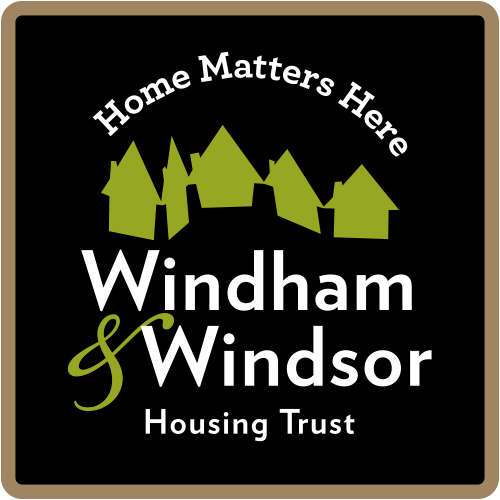Over the last several months, we’ve been dedicating time and attention on what changes need to be made to support resident and neighborhood safety. This conversation has been spurred by residents, community members and housing providers- both private and nonprofit. We’ve been working on a local level to identify what needs exist, then communicating those with our lawmakers. The conversation and work is ongoing and we look forward to learning the best route forward. Please ready the below to understand the full context of what we are looking into and why.
A safe home and neighborhood is one of the five social determinants of health that indicate health and longevity for an individual. As Housing Providers, we play a significant roll in creating an environment where the community we house can count on stability and safety. Through direct support provided by in-house staff or from other organizations in the community, the safety net can help catch people when they need it. However, when the situation is dangerous, illegal or extremely disruptive, Housing Providers need a policy tool to respond effectively and quickly. The proposed solution described below will equip Housing Providers with an effective tool they need to fulfill their responsibility to the residents they serve and to the neighborhood in which they live.
How do Vermont Housing Providers Promote Safety Now?
Housing providers have the responsibility to provide safe and decent homes for the families and individuals who reside in their properties. The primary tools to accomplish this are to
- Implement resident selection policies that screen for unsafe behaviors
- Maintain the safe operation of the buildings
- Implement lease agreements that promote the safety and wellbeing of everyone in the building
- Provide support and referrals to residents when challenges arise.
- Utilize the legal system to address unsafe resident and/or guest behavior when necessary.
How Does Support Help?
Many non-profit housing providers have in-house resident support staff that work directly with residents to build community, offer individual support and make referrals to other services. Examples of this include the SASH and SASH for All Program, which include part time nursing staff and a part time wellness clinician, and in-house teams of Resident Support Coordinators. Private housing providers sometimes take on aspects of this role themselves and will often refer their residents to community services before taking legal action to address a problem. Community services referred by non-profit and private housing providers include Vermont’s Landlord Relief Program and the CAP Agencies HOP Program which can help residents get caught up on back rent, the Retreat and the designated mental health agencies that can offer support and treatment related to mental health and addiction and Vermont’s vast network of food shelves that can help address food insecurity. Helping residents get help when they need it not only stabilizes their lives, but also promotes safety and stability in the building and neighborhoods where they live.
When do Housing Providers Turn to the Legal System?
Housing providers often turn to the legal system for relief when all other avenues for helping a resident adhere to their lease agreements or pay their rent are exhausted. In the case of back-owed rent, the pathway is clear and residents have a variety of opportunities to remedy the situation even as an eviction process is underway.
However, in the past 5 years, there has been a sharp rise in significantly disruptive and dangerous situations that have revealed some gaps in Vermont’s legal system. In some cases, these gaps are being exploited by experienced actors who know the boundaries of the law and push their behavior to the limit.
Resident Exploitation: All over Vermont, there are cases where vulnerable residents have had their homes taken over by a non-leaseholder to either steal their money, set up a place to deal drugs or simply live rent free. Sometimes the resident is cooperating with the non-leaseholder due to their own challenges with addiction, but many times, they are too frightened to stand up to these organized groups and are victimized. Regardless of how the situation came about, Housing Providers have no clear legal tools to address these types of situations because the way the law currently works, it is the resident who is responsible for obtaining a “no trespass order” that will give them the protection they need from the unwanted visitor. Not only are Housing Providers prohibited from obtaining their own “no trespass order,” if they want to prevent a disruptive non-leaseholder from entering the building, every single resident in the building needs to sign off on it! This is both impractical to enforce (police officers are not going to carry around an updated list of residents in their pockets) and unlikely to occur when residents are being intimidated by the very behavior that prompted the need for action.
In one example in Brattleboro, a downtown building has repeatedly been vandalized, broken into and overtaken. Residents have been threatened if they speak up and on more than one occasion, the housing provider’s staff have been surrounded by a group of non-residents who stood their ground when the staff attempted to get them to exit the hallway. When the police arrived, all the non-leaseholders had to do was tell the officer that they are visiting their ‘friend’ or ‘Uncle’ or ‘Grandmother.’ At this point, law enforcement cannot adequately do their job in protecting the public safety.
“I feel gutted and heartbroken by what is happening here, but I can’t afford to leave.” Resident in Brattleboro
Disruptive Resident Behavior: Less common is the situation where the resident themselves is not being taken advantage of, but rather is the locus of the disruption. They may be initiating or inviting illegal activity into their home or they may have severe behavioral challenges that are not suited for community living and they are putting other residents in the building and staff at risk. These are not situations that can be easily addressed with the helping strategies listed above and often the best answer is to use the legal system to remove the resident. The challenge in these situations is that the process of eviction takes so long, up to a year, that the dangerous behavior is allowed to continue. Brattleboro has had several particularly painful examples of this with two shooting deaths and another resident discharging a weapon downtown. In each of these cases, an eviction process was underway.
How can the Legal System be Strengthened?
Housing Providers need legal tools that are responsive and accountable to residents and to the neighborhood where they live. We’re identifying if adjusting existing regulations could do just that.
Give Housing Providers the Ability to No Trespass In cases where there is illegal, exploitative or extremely disruptive behavior occurring, Housing Providers need to be able to obtain a “no trespass order” on the individual(s) without requiring consent from everyone in the building. This would allow Housing Providers to protect vulnerable residents from exploitation, keep illegal activity from occurring in the building, reduce extremely disruptive behavior and promote the safety and wellbeing for everyone in the building. Residents often implore Housing Providers to take action and are understandably baffled and frustrated when they learn that the tools for meaningful action are limited. Finally, this adjustment to Vermont law will also create a more meaningful partnership with law enforcement who can work closely with Housing Providers to identify when a “no trespass order” is warranted.
Source: Social Determinants of Health, Center For Disease Control, May 15, 2024




